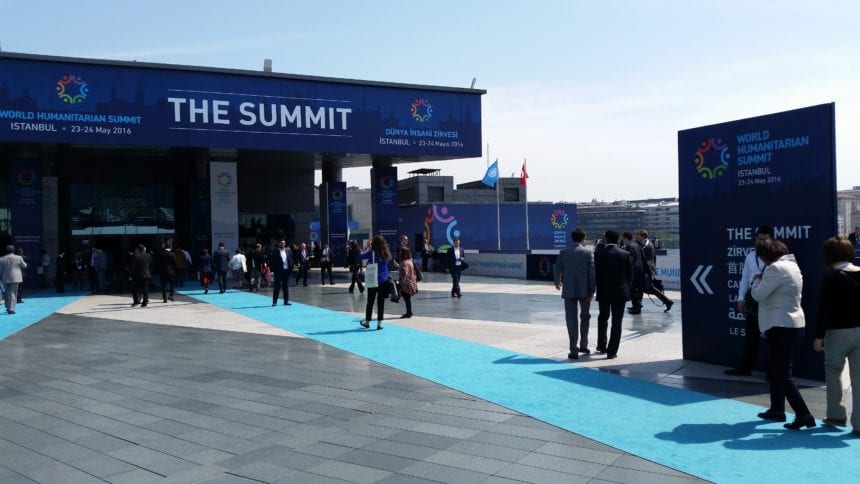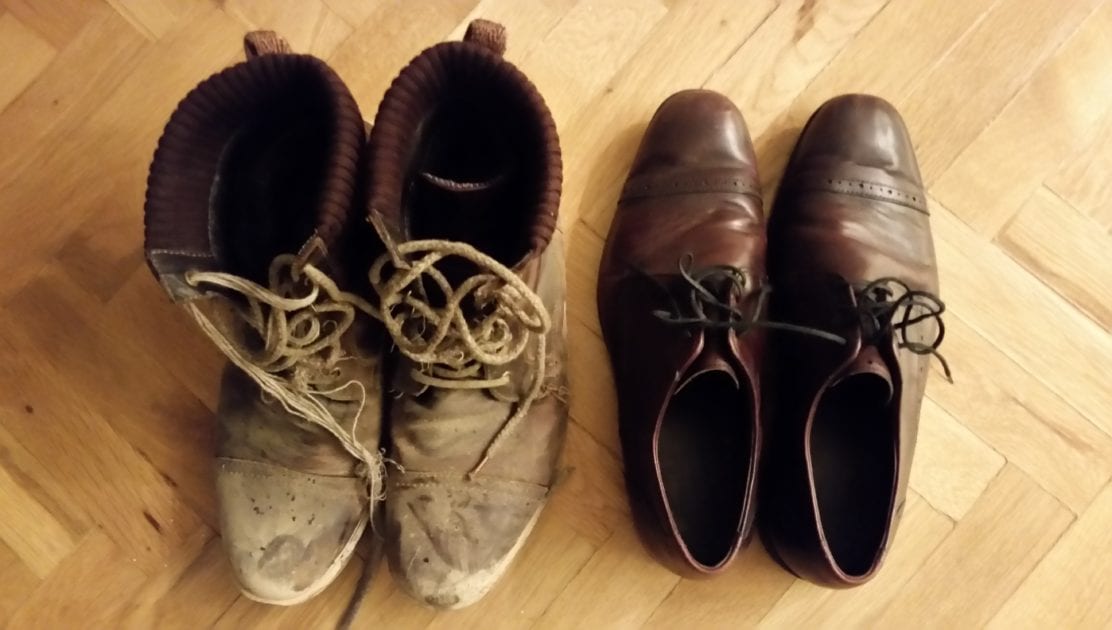The Path of One Humanitarian Aid Worker
Reflections on the World Humanitarian Summit
By Emmett FitzgeraldIn May, I attended the World Humanitarian Summit in Istanbul and then conducted a field visit to the Syrian border to plan our upcoming field-based training programs.
The trip was a strange, exciting mix of two entirely different parts of the humanitarian aid worker experience. From advocacy in a suit and tie on one day to sifting through muddy operational questions the next, the trip required different skill sets and two very different choices of footwear.
The World Humanitarian Summit is a new thing. This was the first time that a gathering of world leaders, aid organizations, and subject-matter experts were brought together by the UN Secretary General to discuss the status of humanitarian action and principles.
The over-arching theme of the Summit was how to improve the delivery of humanitarian aid work at a time of crisis. The world is spending more on aid than ever before, but the numbers of displaced persons and refugees is growing at a far greater rate. And with human rights violations, attacks on hospitals and attacks on aid workers becoming commonplace, the aid system is under unprecedented strain.
My role at the Summit was to advocate for the basic truth that an effective, compassionate humanitarian aid system relies first and foremost upon its people—to do effective humanitarian work, we must care for the carers.
Aid workers are a smart place to leverage investment, I argued. Because if each aid worker is healthy, in better control of their stress levels and making better decisions, that really does impact the lives of hundreds of thousands of people in need. This is not just the right thing to do, it’s also a smart, cheap aid effectiveness initiative.

Leading up to the Summit, it was an uphill battle to get aid worker mental health on the official agenda. We worked as part of a coalition of like-minded advocates to press for a side event dedicated to the topic, but our application was disappointingly denied by the organizers.
Despite this initial set back, we and our advocacy partners achieved a significant victory at the Summit when the UN Deputy Secretary General formally called for greater attention to aid worker safety and well-being, recognizing that “safeguarding humanity requires safeguarding humanitarians. We commit to further enhance the Duty of Care as well as monitoring the health and safety of UN staff and associates serving in high-risk environments. This is the least we can do for those who courageously stand up for humanitarian values and principles.”
At a political level, opinions on the Summit’s overall success have been mixed, but for the CBR Project it was an overwhelming success. As is often the case with such large global gatherings, the tangible work gets done on the margins and I took the opportunity to speak one-on-one about the CBR Project with leaders of some of the world’s best-recognized NGOs, including David Miliband of IRC, Helle Thorning-Schmidt the Chief Executive of Save the Children, and Sean Penn, the co-founder of J/P HRO in Haiti.
It is so important when advocating to get buy-in from the top of organizations, so it was significant to have the opportunity to speak to those industry leaders about our approaches to minimizing the risks of anxiety, depression, burnout and PTSD. The conversations were relatively brief, but at Summits like this when world leaders are in the same room, it’s significant to just get on the agenda. Sometimes advocating for long-term change starts with planting seeds.
At the culmination of the World Humanitarian Summit, Stephen O’Brien, who is the UN Under-Secretary General for Humanitarian Relief flew down to the Turkish border with Syria. His goal was to highlight the need for greater assistance in the current Syrian crisis, and the burden specifically in this region, stressing that “cross border aid operations from Turkey into Syria are vital, reaching some four million people who cannot be reached via other routes.”
That same day, I too flew into Gaziantep, the closest town on the Turkish side to the Syrian border. For the next few days, staying with an old friend from my time working in Haiti, I worked on the planning, logistics and set up for a CBR Project Training Program in Turkey.
Working in the shadow of the Syrian crisis is an exciting opportunity to bring the CBR Project closer to the front line. This is very much a part of our strategy to increase access to the training programs, particularly to people who would not otherwise be able to attend—whether that’s for financial reasons, or because holders of some passports have difficulties getting visas to travel to the US or Europe, or because their jobs are so demanding and time sensitive that they do not have time to travel, take a break, go on a course or even think much about their own health.
So we are bringing the work to where the work is most needed.
The planning process to bring our team out to the Syria crisis continues to be challenging and complex, which is why in late June I was visiting Turkey for a second time along with one of our faculty psychologists. As it turned out, we planned to arrive the evening of the terrorist attacks.
We were both safely away from the airport when the attacks started. But, obviously, it wasn’t a fun night for our loved ones when our phones were turned off in flight and they didn’t know exactly where we were. And, as you can imagine, there have been significant consequences for our working plans.
I will communicate more in the coming days about how the security situation in Turkey has affected our plans. Amman Jordan now looks a more likely setting for our first Syria-related training, but those decisions are still being worked through. So that’s a story for another day.
In the interim, we would love your support. Doing this work in an uncertain world is sometimes complex and expensive. I invite you to learn more, donate, and play a part in the work we’re doing through our new CBR Project website www.changingaidwork.org.
If you have any questions or if you want to reach out, I do love getting emails of support. You can reach me at emmett@garrisoninstitute.org.
Emmett Fitzgerald is Executive Director of the CBR Project.
